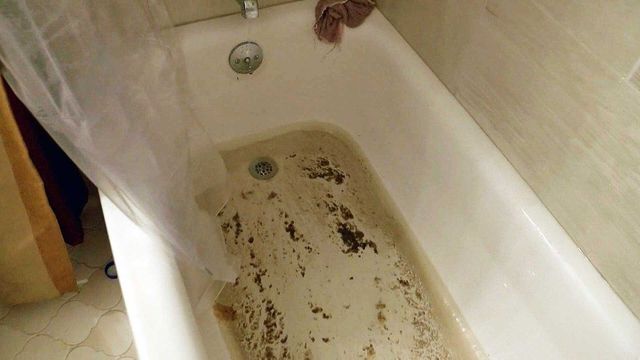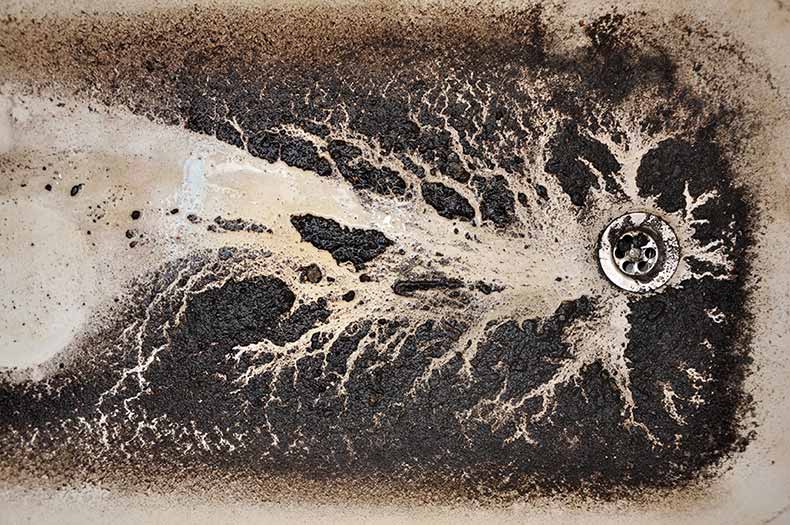Important Factors Behind Sewage in the Bathtub
Important Factors Behind Sewage in the Bathtub
Blog Article
How do you feel with regards to Why is Sewage Backing Up Into My Bathtub??

Sewer backup in the bath tub can be a traumatic and unsanitary trouble for any property owner. Not just is it troublesome, however it additionally positions significant health risks and shows underlying problems with the plumbing system. Comprehending why sewage is showing up with the bath tub is critical for taking proper activity to attend to the trouble successfully.
Introduction to the Problem
Typical Reasons for Sewage Back-up
Blockages in the Drain Line
One of the most common root causes of sewage backup is an obstruction in the sewer line. This can happen because of the build-up of debris, grease, or international items in the pipes, preventing appropriate flow and causing sewer to support into your bathtub.
Tree Origin Intrusion
Tree roots looking for moisture and nutrients can penetrate sewer lines with little fractures or joints. With time, these origins can expand and broaden, causing considerable damage to the pipelines and resulting in sewer back-up problems.
Recognizing the Issue
When sewage draws back up right into the bathtub, it's a clear indicator of a problem with the drain system. The wastewater that must be flowing far from your home is instead finding its way back into your living space, which can bring about considerable damage and health hazards.
Prospective Causes
Numerous aspects can add to sewer back-up in the bathtub. From blockages in the drain line to issues with the plumbing infrastructure, recognizing the root cause is necessary for discovering an option.
Aging Infrastructure
Older homes may have obsoleted plumbing systems that are more susceptible to rust, splits, and deterioration. As pipelines age, they end up being more susceptible to leakages and obstructions, enhancing the probability of sewage back-up events.
Heavy Rainfall or Flooding
Throughout durations of heavy rainfall or flooding, the drain system may end up being overwhelmed with excess water, creating backups and overflows. This can result in sewer supporting into tubs and other components inside the home.
Signs of Sewer Backup
Foul Odors
Undesirable odors emanating from drains pipes or components, especially in the washroom, may suggest sewage backup issues. These smells are frequently solid and relentless, signifying a trouble that needs immediate focus.
Slow Draining Fixtures
Tubs, sinks, and commodes that drain slowly or otherwise at all could be experiencing sewage backup. If several fixtures are impacted all at once, it's likely that the issue stems from an usual point, such as the main sewage system line.
Gurgling Noises
Unusual gurgling or bubbling noises originating from drains pipes when water is running in other places in your home are a sign of air caught in the plumbing system. This air buildup can arise from sewage back-up and should be explored without delay.
Health And Wellness Dangers Related To Sewer Back-up
Contamination of Water Supply
Sewer back-up can pollute the supply of water in your home, posing a major wellness risk to you and your household. Exposure to polluted water can result in gastrointestinal problems, skin infections, and other diseases.
Mold Growth
Dampness from sewer backup can develop excellent conditions for mold growth in your home. Mold spores can aggravate respiratory problems and create allergies in sensitive individuals, making timely clean-up crucial.
Spread of Disease
Sewer consists of dangerous germs, infections, and bloodsuckers that can trigger a variety of conditions, consisting of hepatitis, cholera, and gastroenteritis. Entering into contact with sewer or contaminated surfaces puts you at risk of infection.
Cleaning Up After Sewer Back-up
Disinfection Procedures
Extensively sanitize and sterilize impacted areas after sewer back-up to remove hazardous germs and prevent mold development. Use proper cleaning items and safety gear to ensure safe and effective clean-up.
Remediation of Influenced Locations
Repair any type of damages to floor covering, walls, or fixtures caused by sewage backup. Relying on the extent of the damage, you might need to change carpets, drywall, or various other products to recover your home to its pre-loss condition.
Immediate Actions to Take
Switching Off Water
In the event of sewage back-up, it's essential to shut off the water to stop further contamination and damages. Find the major water shutoff valve in your home and shut it off until the issue can be fixed.
Contacting an Expert Plumber
Handling sewage back-up is not a do it yourself task. Call a qualified plumber with experience in managing sewage-related problems to evaluate the circumstance and do needed repairs or cleanings.
Preventing Contact with Infected Water
Until the sewage back-up is resolved, prevent contact with contaminated water to prevent the spread of microorganisms and virus. Put on safety equipment if you have to be in the affected area and clean your hands extensively afterward.
Preventive Measures
Routine Maintenance of Sewage System Lines
Arrange normal inspections and upkeep of your drain lines to identify and address prospective concerns before they intensify into major problems. This can include clearing out debris, examining for tree root invasion, and repairing any broken pipelines.
Installing Bayou Valves
Consider mounting backwater shutoffs in your plumbing system to avoid sewer from flowing back right into your home during periods of heavy rainfall or flooding. These shutoffs instantly close when water draws back up, protecting your home from contamination.
Correct Disposal of Household Waste
Stay clear of purging anything apart from bathroom tissue and human waste down the commode to stop blockages and clogs in the drain line. Dispose of grease, oil, and various other household chemicals correctly to lessen the threat of plumbing issues.
Why is there sewage coming up from my bathtub?
These gas fumes, like hydrogen sulfide – the gas that leaves a rotten egg smell in its wake and is highly flammable and toxic – can be hazardous to your health. Sewage poses major health risks as it contains harmful bacteria and microorganisms that can be dangerous if exposed to them.
Sewage cleanup should be considered an emergency.
So, why is there sewage coming up from your bathroom? There are several common causes of a sewage backup.
The most common reason for sewage coming up through your bathroom is a clogged sewer line. All plumbing in your bathroom connects to a single drain pipe that leads to the sewer line under your house. This drain line carries all wastewater and sewage away from your home to the city’s sewer system.
When the sewer line becomes clogged or blocked, wastewater has nowhere to go but back toward your house. This results in sewage coming up through your drains, often starting with your tub or shower.
Another culprit may be the sewage ejector pump, which is used when a bathroom, laundry room or any other type of plumbing fixture is located below the level of the main sewer or septic line flowing from the house. Most commonly, ejector pumps are used in homes with basement bathrooms or laundry rooms.
When you experience sewage coming up through your bathtub, it’s always best to contact a professional. Attempts to fix a clogged sewer line without experience often lead to more plumbing damage.
Make sure that no one enters the affected area, and open as many windows as possible. Pre-treat the flooded area with small splashes of chlorine bleach. Wear protection gear like rubber gloves, a mask, and water-resistant coveralls.
https://www.shawlocal.com/the-herald-news/sponsored/2022/08/17/omega-plumbing-10199038/

We hope you enjoyed our piece on What to Do if Sewage Starts Coming Up Through Your Bathtub. Thank you for spending some time to browse our short article. Loved our blog? Please quickly share it. Let another person find it. Many thanks for your time. Kindly stop by our blog back soon.
Visit Url
Report this page